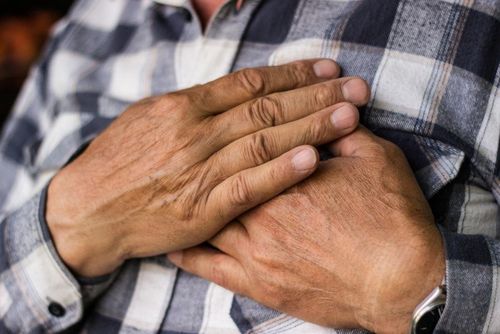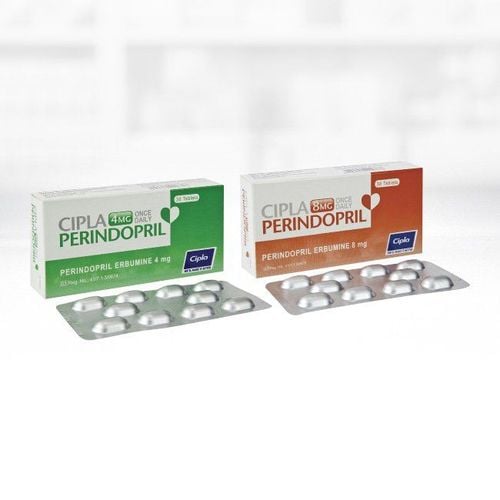This is an automatically translated article.
Unsustainable ventricular arrhythmias are a type of arrhythmia, characterized by episodes of tachycardia lasting < 30 seconds. Tachycardia is very dangerous and requires prompt detection and treatment. Let's learn about unstable ventricular tachycardia in the following article.
1. What is persistent ventricular tachycardia?
Ventricular tachycardia is a cardiac arrhythmia that originates in the ventricles, from the bifurcation of the bundle of His downwards. Ventricular tachycardia occurs when there are more than 3 consecutive extrasystoles. During this time, the signal transmission in the ventricles is disturbed, causing the ventricles to contract faster, resulting in the heart continuously ejecting blood while the interval between beats is shorter than normal, eventually leading to the ventricles. not filled with blood.
Ventricular tachycardia has a frequency of 100-200 cycles/minute, when the frequency is from 250-300 cycles/minute, it is called ventricular flutter, and the frequency > 350 times/minute is called ventricular fibrillation. Special form of rhythm. There is a special form of multifocal ventricular tachyarrhythmia called Torsade de point.
Ventricular tachyarrhythmias can be divided into 2 types based on the duration of the ventricular tachycardia:
Unsustainable ventricular tachycardia: When the tachycardia lasts less than 30 seconds. Sustained ventricular tachycardia: When the tachycardia lasts for more than 30 seconds.
2. Causes of ventricular tachycardia
Ventricular tachyarrhythmias can be caused by the following:
Congenital heart disease; Heart failure; Ischemic heart disease ; Cardiomyopathy such as dilated cardiomyopathy, hypertrophic cardiomyopathy, right ventricular dysplasia,...; Electrolyte disturbances ; Long QT syndrome due to congenital (due to genetic abnormalities,...) and acquired (due to drugs such as Quinidine, Erythromycin, Haloperidol,...); Some drugs such as Azithromycin, Quinolone antibiotics, ... can cause cardiac arrhythmias.
3. Symptoms of ventricular tachycardia
Clinical symptoms of ventricular tachyarrhythmias vary widely from patient to patient, depending on clinical circumstances, comorbidities, ventricular rate, etc. Some patients have no symptoms. On the contrary, some patients present with syncope, sudden death, ...
Common clinical symptoms of ventricular tachycardia:
Functions: Dizziness, lightheadedness, chest tightness, chest pain, feeling chest pressure, nervousness, insecurity, anxiety. Entities: Auscultation of the heart has a very fast, regular or irregular heartbeat, can't hear the heart beat, palpation has a fast, small pulse, sometimes not palpable, blood pressure drops or cannot be measured, ... Electrocardiogram : Heart rate ranges from 130 to 170 beats/min; Irregular heartbeat, especially if ventricular tachycardia is preceded by multiple or mixed beats; The QRS complex is dilated, presenting akin to left or right bundle branch block; It can be seen that the P wave has a slower frequency than the QRS. In the absence of P waves, esophageal lead dissociation between atrial and ventricular rhythms.
4. Treatment of ventricular tachyarrhythmias
Principle: Before starting treatment for ventricular tachycardia, it is necessary to know:
Causes of ventricular tachycardia; Mechanism of arrhythmia; Trigger factors; Complications may occur; The effectiveness of the treatment method; Side effects of treatments. Treatment methods for ventricular tachyarrhythmias:
Cardioversion by electric shock or drugs (Amiodarone, Lidocaine, Procanamide, beta-blockers, ...); Discontinue drug suspected of causing arrhythmia; Maintenance therapy with drugs; Treatment of ventricular tachycardia with radio frequency wave energy; Implant pacemakers, defibrillators; Surgery. Treatment of unstable ventricular tachycardia: Only relieve the patient when the patient is symptomatic and use reliever medication as in the treatment of persistent ventricular tachycardia (Lidocaine, Amiodarone, Procainamide, Phenytoin, Propafenone,... ).
5. Long-term treatment
The goal is to prevent sudden death, preferably implantation of an automatic defibrillator. However, deciding on treatment is often complicated, depending on the estimated probability of life-threatening episodes of ventricular tachycardia and the severity of heart damage.
No long-term treatment is needed when the onset of ventricular tachycardia has a transient or reversible cause.
Unsustainable episodes of ventricular tachycardia increase the risk of death in patients with structural heart disease, especially those with an ejection fraction < 0.35; Therefore, a thorough evaluation is required in these patients, and implantation of an automated defibrillator may be considered in these patients.
Prevention of ventricular tachycardia is very important, so it is necessary to combine antiarrhythmic drugs, ablation through the arrhythmogenic substrate catheter or surgery. Catheter ablation is commonly used in patients with episodes of ventricular tachycardia within well-defined syndromes and episodes of ventricular tachycardia in patients without structural heart disease.
Ventricular tachycardia is a very dangerous disease, threatening the life of the patient. However, with the advancement of medicine today, there are many methods of treating ventricular tachycardia, helping to relieve symptoms and maintain cardiovascular health for patients. Therefore, patients should regularly go to the doctor to find out the disease and have timely treatment.
Please dial HOTLINE for more information or register for an appointment HERE. Download MyVinmec app to make appointments faster and to manage your bookings easily.













